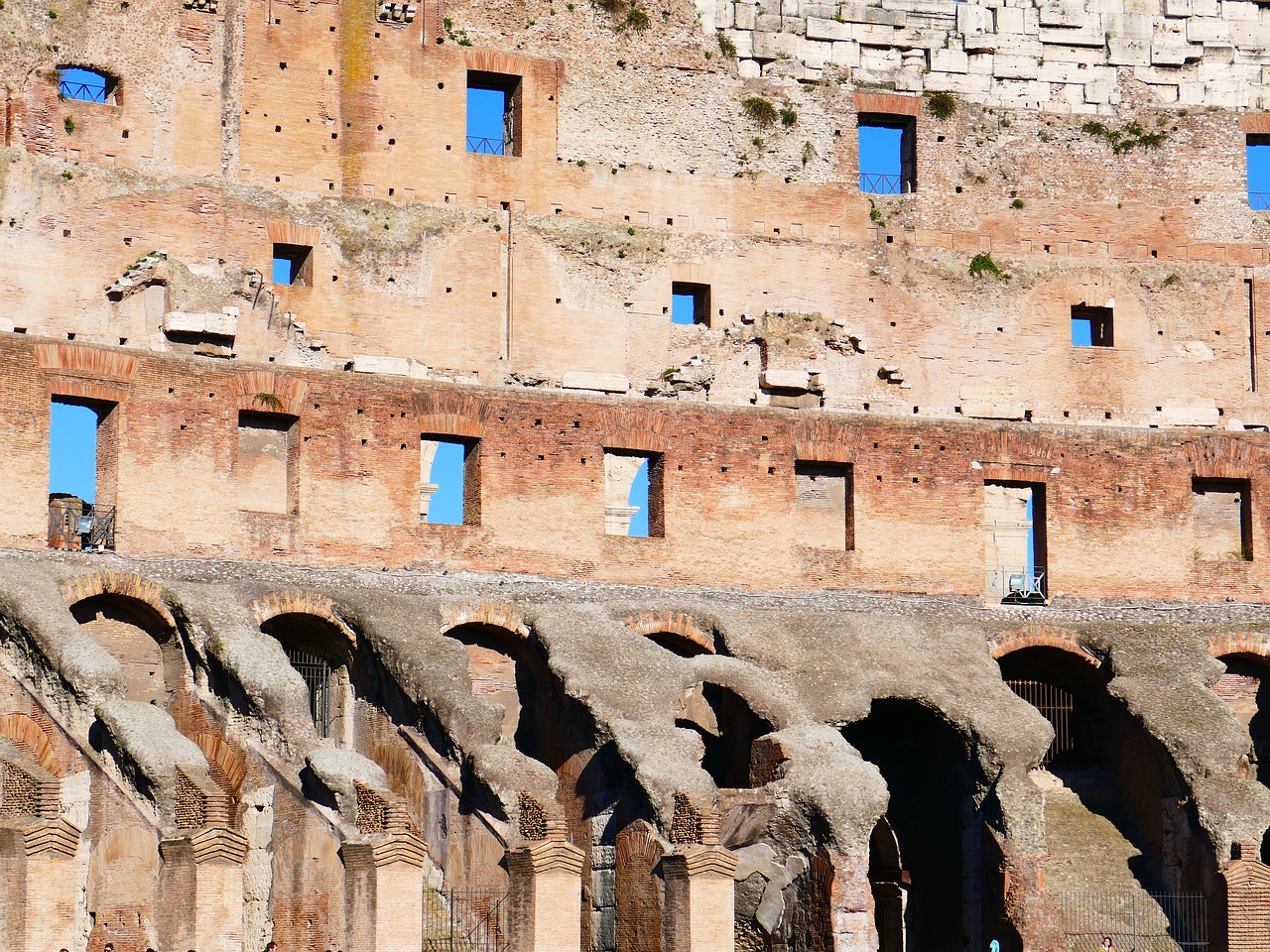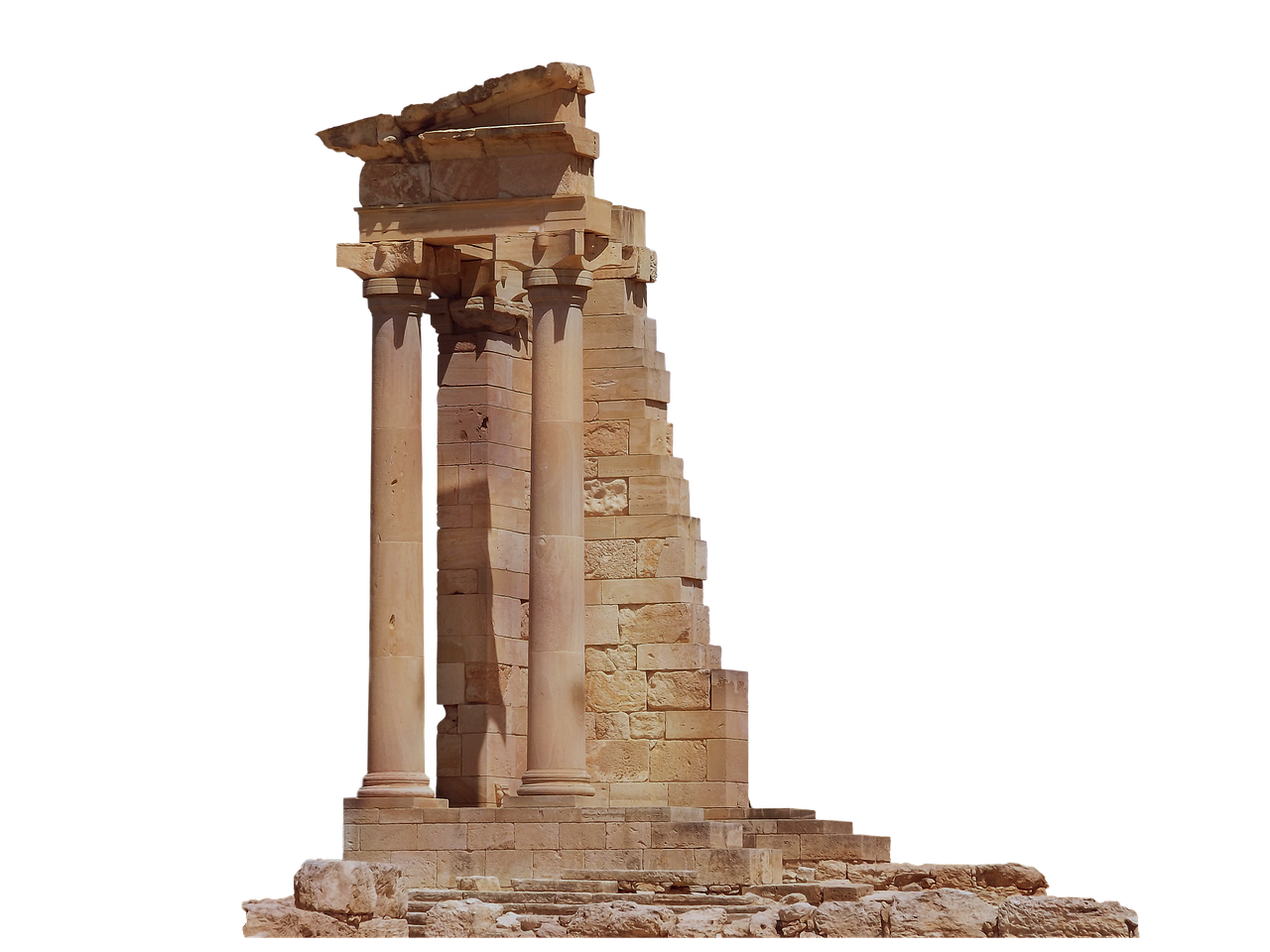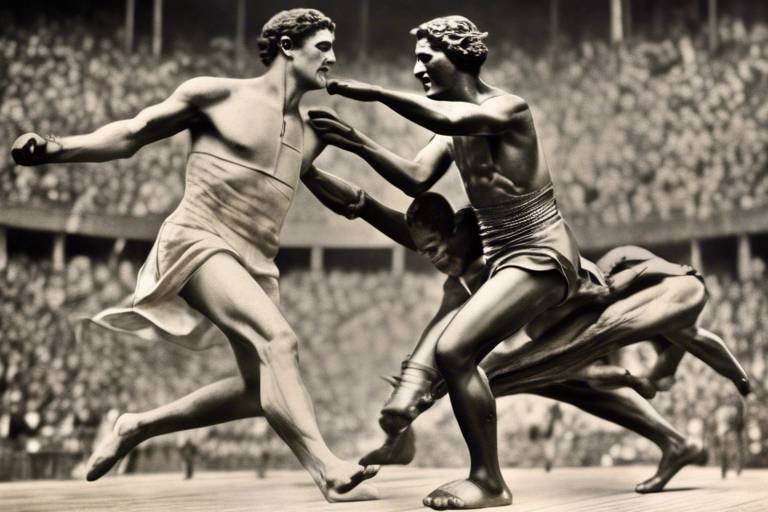The Fall of the Western Roman Empire - Key Factors
Exploring the significant factors that led to the decline and eventual collapse of the Western Roman Empire is like unraveling a complex tapestry woven with threads of economic challenges, military weaknesses, political instability, social unrest, barbarian invasions, religious transformations, environmental factors, and cultural decline. Each thread played a crucial role in the demise of an empire that once stood as a symbol of power and grandeur.
One of the key factors contributing to the fall of the Western Roman Empire was the economic challenges it faced. The empire grappled with issues such as rampant inflation, burdensome taxation, and disruptions in trade routes. These factors eroded the empire's financial stability, leading to a weakened economy that struggled to sustain the vast infrastructure and military might of Rome.
Military weakness also played a pivotal role in the empire's downfall. Constant invasions from external forces, overextension of resources, and the reliance on mercenaries rather than loyal soldiers all contributed to the decline of Rome's defense capabilities. The once formidable Roman legions found themselves stretched thin and unable to effectively protect the empire's vast territories.
Political instability further exacerbated the empire's woes. Corruption, succession crises, and ineffective leadership created internal divisions that weakened the empire from within. The constant power struggles and lack of strong central authority left Rome vulnerable to external threats and internal strife.
Social unrest added another layer of complexity to the empire's decline. Class disparities, slave uprisings, and cultural shifts created tensions within Roman society, undermining the social fabric and cohesion that had held the empire together for centuries. The once unified Roman populace became fragmented, further weakening the empire's foundation.
The relentless onslaught of barbarian invasions from Germanic tribes and the Huns posed a formidable external threat to the already weakened Roman Empire. The barbarian incursions overwhelmed Roman defenses and territories, pushing the empire to the brink of collapse as it struggled to fend off these relentless attacks.
Religious transformations, particularly the rise of Christianity, also played a significant role in the empire's decline. The spread of Christianity brought about profound changes in society, politics, and culture, challenging traditional Roman beliefs and practices. This religious shift further divided the populace and weakened the empire's sense of unity and identity.
Environmental factors, such as climate change, disease outbreaks, and agricultural difficulties, added to the empire's challenges. These environmental pressures strained the empire's resources and resilience, making it even more difficult for Rome to cope with the myriad internal and external threats it faced.
Lastly, the cultural decline of the Western Roman Empire marked the erosion of traditional values, intellectual stagnation, and the loss of civic pride. As cultural norms shifted and societal values evolved, the empire struggled to maintain its identity and sense of purpose, hastening its ultimate collapse.
In conclusion, the fall of the Western Roman Empire was a complex and multifaceted process influenced by a myriad of interwoven factors. From economic struggles to military defeats, political turmoil to social unrest, the empire faced a perfect storm of challenges that ultimately led to its demise and the dawn of a new era in history.

Economic Challenges
Exploring the significant factors that contributed to the decline and eventual collapse of the Western Roman Empire, leading to the end of an era and the beginning of the Middle Ages.
During the decline of the Western Roman Empire, economic challenges played a crucial role in weakening the empire's financial stability. Factors such as inflation, excessive taxation, and disruptions in trade routes all contributed to the economic downfall of the once prosperous empire. The continuous debasement of the currency led to a loss of trust in the monetary system, further exacerbating the economic turmoil. The empire's inability to effectively manage its resources and revenue streams left it vulnerable to external pressures and internal strife.

Military Weakness
The military weakness of the Western Roman Empire played a crucial role in its eventual downfall. The empire, once known for its formidable legions and military prowess, began to face significant challenges that compromised its defense capabilities. One of the key factors contributing to this military decline was the constant need for expansion and defense of vast territories. The empire's borders stretched far and wide, leading to overextension of resources and manpower. This overextension made it difficult for the Roman legions to effectively defend the empire against external threats.
Moreover, the reliance on mercenaries to supplement the Roman army proved to be a double-edged sword. While mercenaries provided additional manpower, they often lacked the loyalty and discipline of Roman soldiers. This reliance on hired soldiers weakened the cohesion and effectiveness of the military forces, making them more vulnerable to coordinated attacks by invading forces. The lack of a unified and loyal army further exacerbated the military weaknesses of the empire.
Invasions by barbarian tribes, such as the Visigoths, Vandals, and Huns, posed significant challenges to the already weakened Roman military. These barbarian invasions were fierce and relentless, exploiting the vulnerabilities of the empire's defenses. The Roman legions, once the epitome of military strength, struggled to repel these invaders, leading to the gradual erosion of Roman control over its territories.
Additionally, internal strife and power struggles within the Roman military hierarchy further weakened its ability to respond effectively to external threats. Corruption and political interference often influenced military decisions, compromising the strategic planning and coordination required to defend the empire. The lack of strong leadership and clear military objectives hindered the Roman army's ability to adapt to evolving warfare tactics employed by the barbarian invaders.
Overall, the military weakness of the Western Roman Empire was a combination of overextension, reliance on mercenaries, internal conflicts, and the inability to effectively counter external threats. These factors collectively contributed to the gradual erosion of Roman military power, paving the way for the empire's ultimate collapse and the transition into the tumultuous period known as the Middle Ages.

Political Instability
Exploring the significant factors that contributed to the decline and eventual collapse of the Western Roman Empire, leading to the end of an era and the beginning of the Middle Ages.
Political instability played a crucial role in the downfall of the Western Roman Empire. The empire faced constant turmoil due to corruption within the government, succession crises, and ineffective leadership. The continuous power struggles and conflicts for the throne created internal divisions that weakened the empire's ability to govern effectively.
Imagine a ship sailing through treacherous waters with a captain who is constantly changing course without a clear direction. This lack of stable leadership led to a breakdown in governance, making it challenging to address the empire's pressing issues.
Moreover, the widespread corruption among officials sapped the empire's resources and eroded public trust in the government. As the ruling elite focused on their personal gain rather than the well-being of the empire, the political system became increasingly dysfunctional.
The succession crises further exacerbated the situation, as rival claimants to the throne often resorted to violence and intrigue to secure power. This internal strife weakened the empire's unity and opened the door for external threats to exploit its vulnerabilities.
Ultimately, the political instability within the Western Roman Empire created a fertile ground for further disintegration, paving the way for its eventual collapse.

Social Unrest
Exploring the significant factors that contributed to the decline and eventual collapse of the Western Roman Empire, leading to the end of an era and the beginning of the Middle Ages.
Social unrest played a pivotal role in the unraveling of the Western Roman Empire. The empire faced internal turmoil stemming from deep-rooted class disparities. The stark contrast between the wealthy elite and the impoverished masses created a breeding ground for discontent. Slave uprisings further exacerbated the social divide, posing a direct challenge to the established order. The cultural shifts within society, marked by changing values and norms, added to the growing unrest.
Moreover, the erosion of civic pride and a sense of shared identity weakened the social fabric that had held the empire together for centuries. As communities became increasingly fragmented, loyalty to the empire waned, making it harder to rally support in times of crisis. The breakdown of social cohesion left the empire vulnerable to external pressures and internal conflicts, hastening its decline.
Amidst this social upheaval, the once-unified Roman society found itself fractured along various fault lines. The disintegration of social norms and structures sowed seeds of discord that further weakened the empire's foundations. The inability to address these underlying social tensions effectively contributed significantly to the eventual collapse of the Western Roman Empire.

Barbarian Invasions
During the final years of the Western Roman Empire, one of the most critical factors contributing to its downfall was the relentless onslaught of barbarian invasions. These invasions, primarily from Germanic tribes and the fearsome Huns, posed a significant external threat that the weakened Roman defenses and territories struggled to repel.
The Germanic tribes, including the Visigoths, Vandals, and Ostrogoths, exploited the empire's vulnerabilities, launching incursions that resulted in widespread destruction and territorial losses. The Huns, under the leadership of Attila, struck fear into the hearts of Romans with their fierce cavalry and brutal tactics, further destabilizing the already fragile Western Roman Empire.
The relentless pressure from these barbarian invaders overwhelmed the Roman military, which was already stretched thin due to overextension and reliance on mercenaries. The traditional Roman legions, once the formidable backbone of the empire, found themselves outmatched and outmaneuvered by the swift and agile tactics of the barbarian warriors.
As the barbarian incursions intensified, key regions of the Western Roman Empire fell into the hands of the invaders, further weakening the empire's ability to defend its borders and maintain control over its territories. The sacking of Rome by the Visigoths in 410 AD and the Vandals in 455 AD symbolized the ultimate humiliation and decline of Roman power in the face of relentless barbarian assaults.
Moreover, the influx of barbarian tribes into Roman territories brought about significant demographic shifts and cultural changes. The integration of these tribes into the fabric of the empire altered the social dynamics and further eroded the unity and cohesion that had once characterized Roman society.
In conclusion, the barbarian invasions played a pivotal role in the fall of the Western Roman Empire, representing a formidable external force that exploited the empire's weaknesses and hastened its ultimate collapse. The relentless pressure exerted by the Germanic tribes and the Huns, coupled with the internal challenges the empire faced, sealed the fate of one of the greatest civilizations in history.

Religious Transformation
Exploring the significant factors that contributed to the decline and eventual collapse of the Western Roman Empire, leading to the end of an era and the beginning of the Middle Ages.
The religious transformation during the decline of the Western Roman Empire played a pivotal role in reshaping the societal and cultural landscape of the era. The rise of Christianity, once a persecuted minority, gradually gained prominence and influence, challenging the traditional Roman beliefs and practices.
As Christianity spread throughout the empire, it brought about significant changes in the social fabric and political dynamics. The teachings of Christ emphasized compassion, humility, and equality, contrasting with the hierarchical and often oppressive structures of Roman society.
This shift in religious orientation led to a redefinition of values and ethics, impacting not only individual behavior but also the governance of the empire. Christian principles began to influence laws, policies, and moral standards, gradually replacing the traditional Roman pantheon and rituals.
The growing influence of Christianity also fostered a sense of community and belonging among believers, transcending social boundaries and offering a new sense of identity and purpose. Churches became centers of congregational life, education, and charity, further solidifying the role of Christianity in shaping the social order.
Moreover, the conversion of Emperor Constantine to Christianity in the 4th century marked a significant turning point, as it granted official recognition and support to the faith, paving the way for its eventual dominance in the Roman Empire.
Q: What role did the rise of Christianity play in the fall of the Western Roman Empire?
A: The rise of Christianity contributed to a shift in values, governance, and societal norms, challenging traditional Roman beliefs and practices.
Q: How did the conversion of Emperor Constantine impact the spread of Christianity in the Roman Empire?
A: Emperor Constantine's conversion provided official recognition and support to Christianity, leading to its eventual dominance and influence in the empire.
Q: Did the spread of Christianity lead to social cohesion or division within the Roman Empire?
A: While Christianity fostered a sense of community among believers, it also led to conflicts with traditional Roman practices and beliefs, creating both cohesion and division in society.
Q: How did the influence of Christianity on laws and policies affect the governance of the Roman Empire?
A: Christianity influenced the development of laws and policies in the Roman Empire, promoting values of compassion, justice, and equality that shaped governance and societal norms.

Environmental Factors
Environmental challenges played a crucial role in the decline of the Western Roman Empire. The empire faced various difficulties stemming from environmental factors that strained its resources and resilience. Climate change, with its unpredictable patterns and extreme conditions, posed a significant threat to agricultural productivity, leading to food shortages and economic instability. Moreover, disease outbreaks, such as the Antonine Plague and the Plague of Cyprian, ravaged the population, causing widespread death and disrupting societal functions.
Additionally, environmental degradation and deforestation further exacerbated the empire's challenges, as the depletion of natural resources impacted both the economy and the ability to sustain a growing population. The decline in soil fertility and water scarcity due to unsustainable agricultural practices contributed to the weakening of the empire's agricultural sector, which was vital for its survival. These environmental pressures, combined with other internal and external factors, created a perfect storm that the Roman Empire struggled to weather.

Cultural Decline
The cultural decline of the Western Roman Empire played a crucial role in its eventual collapse. As the empire faced various internal and external challenges, its cultural fabric began to unravel, leading to a loss of traditional values and societal cohesion. The once vibrant intellectual scene of Rome stagnated, with a decline in educational pursuits and a lack of innovation.
Moreover, the erosion of civic pride among the Roman population further weakened the sense of unity and identity that had once characterized the empire. As social structures shifted and traditional customs were abandoned, a sense of disconnect permeated Roman society, contributing to its overall decline.
The arts and literature, which had flourished during the height of the empire, also suffered during this period of cultural decay. The patronage of the arts dwindled, leading to a decline in creativity and cultural production. The once grand architectural projects that symbolized Roman power and ingenuity fell into disrepair, reflecting the broader decline of the empire.
Additionally, the spread of Christianity and the subsequent decline of traditional Roman beliefs further fractured the cultural landscape of the empire. The rise of Christianity brought about significant social and political changes, challenging the established order and contributing to a sense of cultural disarray.
In essence, the cultural decline of the Western Roman Empire mirrored its broader societal and political unraveling. As traditional values eroded, intellectual pursuits waned, and artistic expression faltered, the empire found itself increasingly vulnerable to the external pressures that would ultimately lead to its downfall.
Frequently Asked Questions
- What were the main economic challenges faced by the Western Roman Empire?
The Western Roman Empire grappled with issues such as inflation, heavy taxation, and disruptions in trade routes. These economic struggles significantly weakened the empire's financial foundation, contributing to its eventual collapse.
- How did military weaknesses impact the decline of the Roman Empire?
Military factors like invasions from external forces, overextension of territories, and the reliance on mercenaries all played a role in diminishing the defense capabilities of the Roman Empire. These weaknesses left the empire vulnerable to external threats.
- What role did political instability play in the downfall of the Western Roman Empire?
Political instability, marked by corruption, succession disputes, and ineffective leadership, led to internal divisions within the empire. These divisions weakened the central authority and hindered the empire's ability to govern effectively.
- How did social unrest contribute to the decline of the Roman Empire?
Social unrest, fueled by class disparities, slave uprisings, and cultural shifts, eroded the social cohesion of the Roman Empire. These internal tensions weakened the fabric of society and made it more vulnerable to external pressures.
- What were the significant impacts of barbarian invasions on the Western Roman Empire?
The barbarian invasions, particularly by Germanic tribes and the Huns, posed formidable external threats that overwhelmed the weakened Roman defenses. These invasions led to the loss of territories and further weakened the empire's stability.
- How did religious transformations influence the decline of the Roman Empire?
The rise of Christianity and the decline of traditional Roman beliefs had profound effects on society and politics. The shift in religious dynamics altered cultural norms and values, contributing to the weakening of the empire's traditional identity.
- What environmental challenges exacerbated the decline of the Western Roman Empire?
Environmental factors such as climate change, disease outbreaks, and agricultural difficulties strained the empire's already limited resources. These challenges further weakened the empire's resilience and ability to sustain itself.
- How did cultural decline play a role in the ultimate collapse of the Western Roman Empire?
The cultural decline, characterized by the loss of traditional values, intellectual stagnation, and diminishing civic pride, contributed to the erosion of the empire's societal coherence. This decline in cultural vitality hastened the empire's eventual collapse.


















